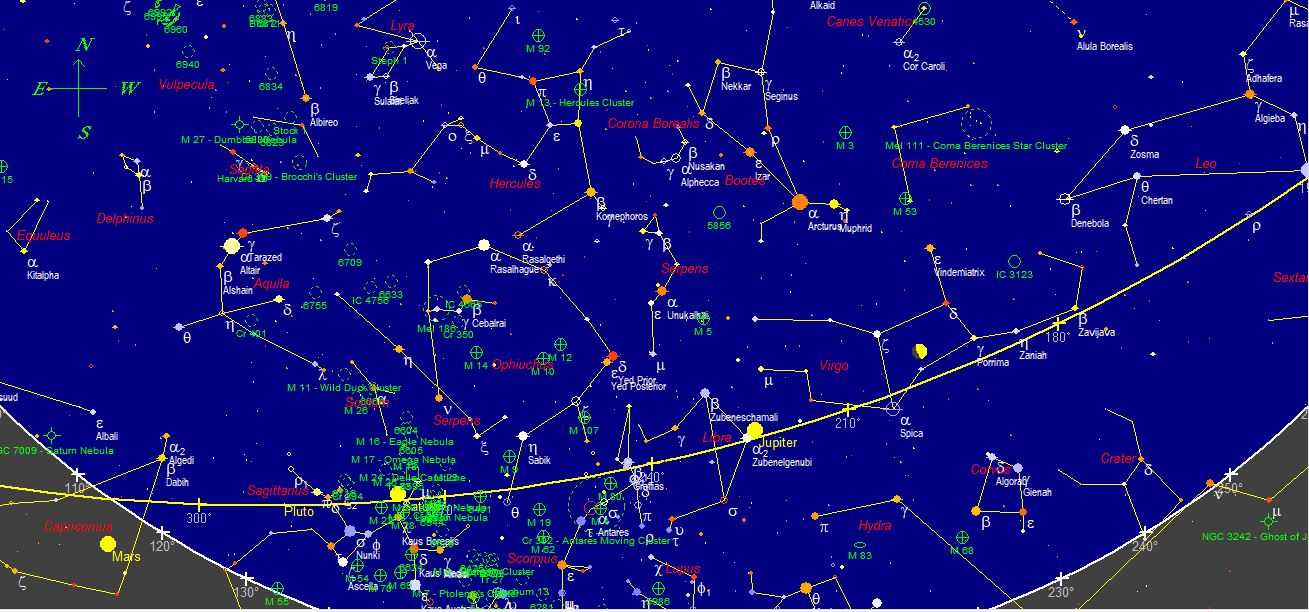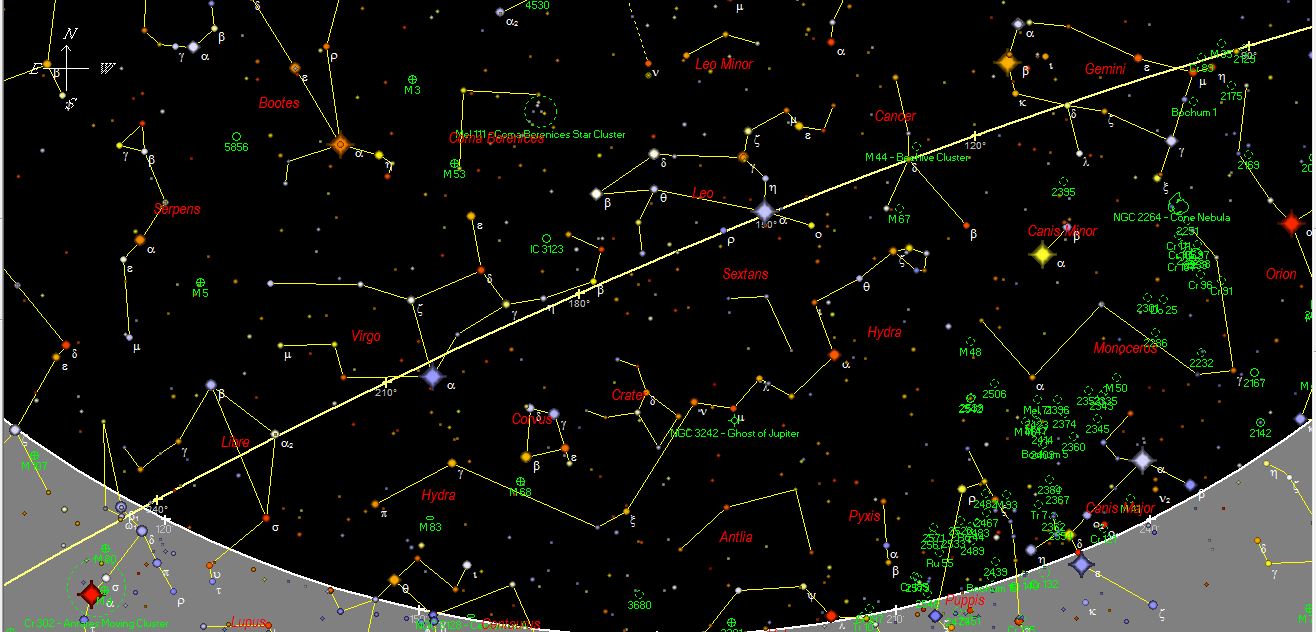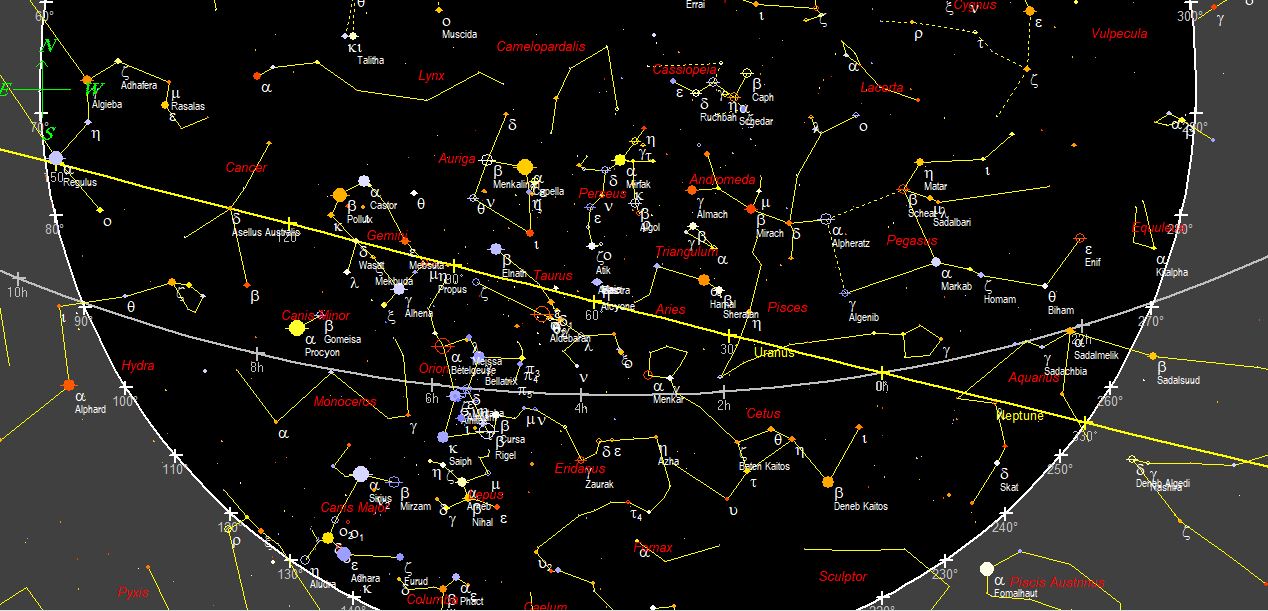
The Sun is in Ophiuchus until the 18th of the month when it passes, in Sagittarius. December 21st is the Winter Solstice, the shortest day there is for our hemisphere, because the Sun is at the lowest point of the Ecliptic; inappropriately it is said that the shortest is December 13, but in reality at the turn of the 13 the sun sets before but rises a little earlier.
Oriented towards South in the evening, we see the Acquarium set to the west and to the east we find the constellation of Pisces, Aries, Taurus and Gemini. Orione is in its full splendor all night long.
Venus and Mercury, close to the Sun can be observed before dawn; Saturn in conjunction with the Sun will be observable after 15 after sunset. Mars and Jupiter arise in the late night.
Let’s not miss the night of the super moon on December 3rd. It is in fact in the point of its orbit closer to the Earth, the perigee, so it will look bigger than we are used to seeing it and in fact it is about 7% and brighter than 16%.
Orion, the handsome hunter
Now let’s look at Orion and learn to distinguish it in the sky. A quadrilateral of stars with three stars in the center in a row to represent the belt and vertically under others to represent the sword.
The four stars of the quadrilateral are Betelgeuse, a, a red supergiant, variable from mag.0 and 1.3, which is 427 al, Bellatrix, g, of mag.1.6 to 994 al, Rigel, b, a blue supergiant that with its magnitude 0,1 is the seventh star in order of brightness of the sky. and the brightest of Orion to 900 a.l and Saiph, k, of mag.2. at 722 a.l.
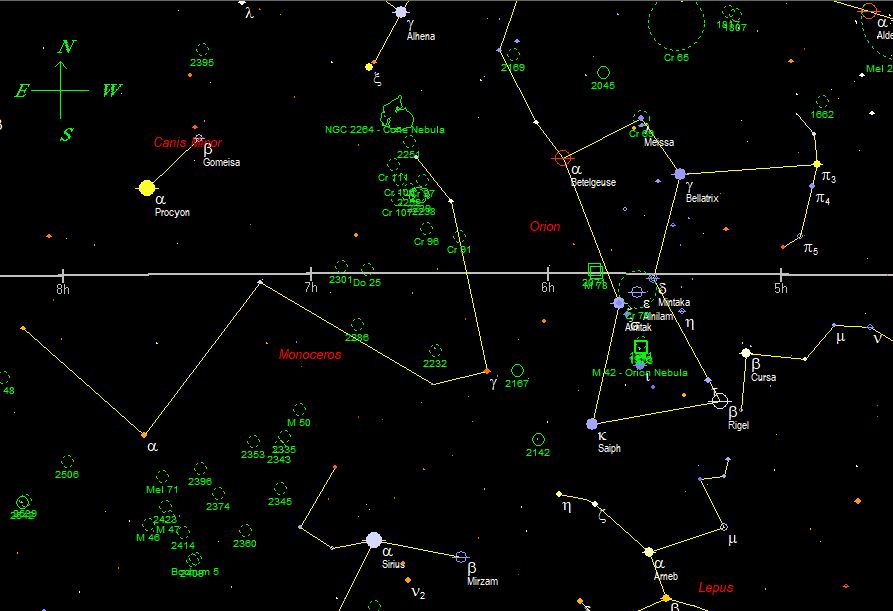
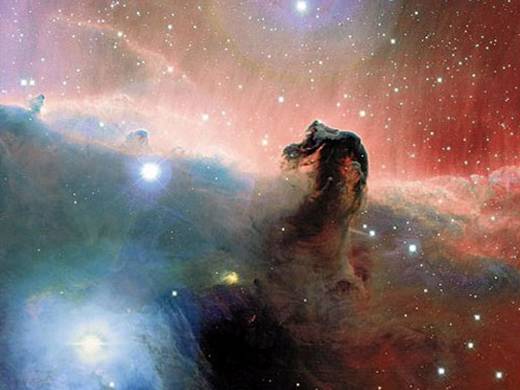
The trio of stars of the belt placed on a line halfway between Betelgeuse and Rigel, are Mintaka, Alnilam and Alnitak. Mintaka, very close to the celestial equator, is double and Alnitak is triple: to observe the first small instruments are enough, while the second is more difficult to separate because the components are very close.
Starting from Alnitak and going south, the tenuous nebulosa IC 434 extends, on one side of which is the Horsehead Nebula (Horse Head Nebula), a cloud of dark powders. To the naked eye it is impossible to see it, but it is captured with long exposure photos
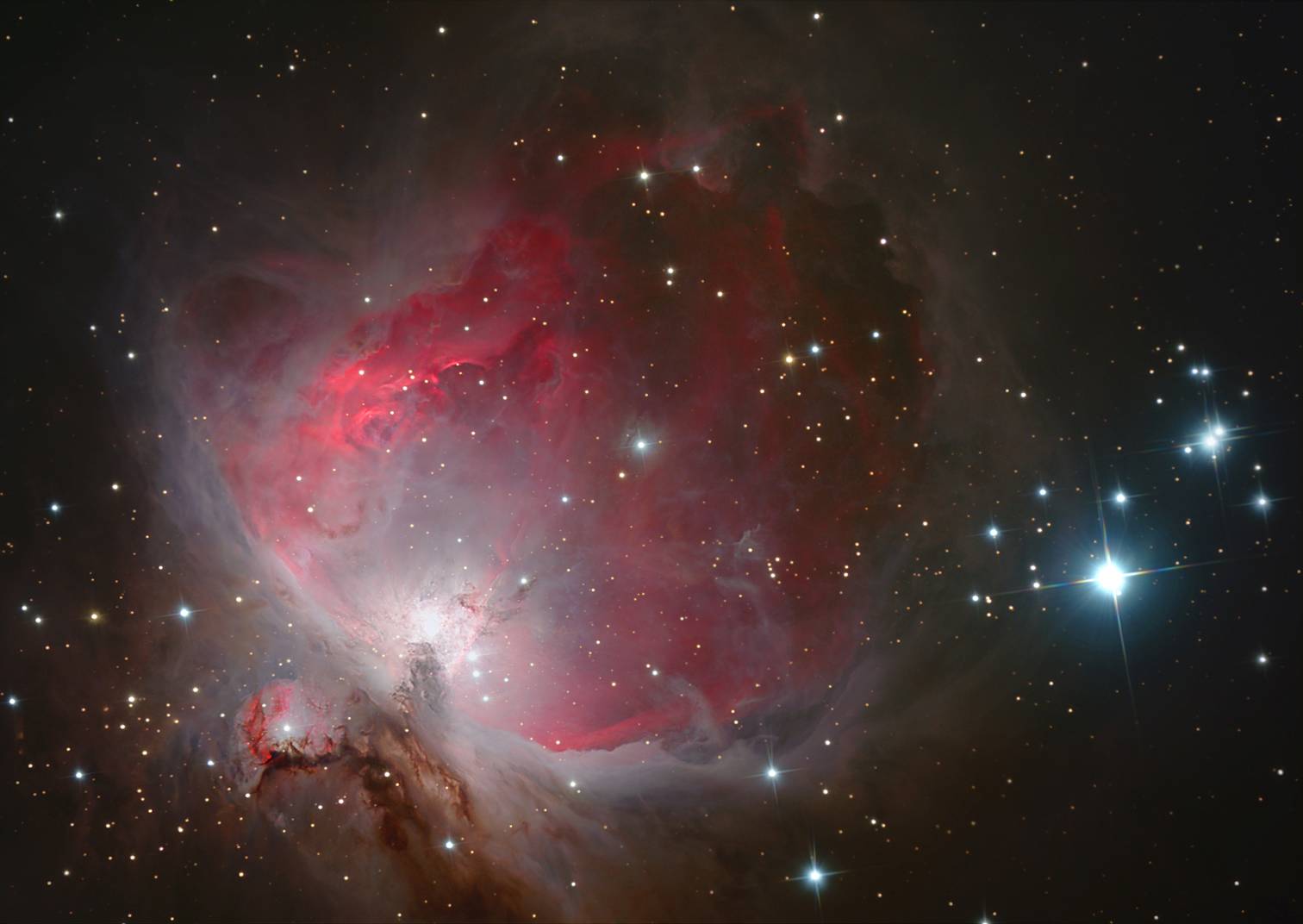
The most famous object of the constellation is the Orion Nebula, a large cloud of gas and dust visible to the naked eye. The nebula seems to be cut in two parts, M42 and M43, from a dark strip called Bocca di Pesce, near which, almost in the heart of the nebula, there is theta1 Orionis, a multiple star that illuminates the surrounding gases: this star is called also Trapezium, because it consists of four stars arranged in trapezium. The Orion Nebula has a diameter of at least 15 light years and is about 1300 light years from us. Stars are forming in the nebula.
Sirius in Orion, to the East, the brightest star in the sky of mag. -1.5, of the Big Dog, constellation formed by a group of stars in the shape of a dog. It is one of the stars closest to the Sun at 8.7 a.l. It is a double white star, with a white dwarf as a companion SirioB. Another group of stars.
To the East of Orion, on the line connecting Bellatrix and Betelgeuse, two stars represent the Orione’s Minor Dog; of them the brightest is Procione di mag. 0.4, octave of the sky for brightness, a white-yellow star distant 11.3 a.l., also very close to the Sun.
In mythology Orion was a very talented giant hunter, son of Poseidon: so tall that he could walk on the bottom of the sea, keeping his head out of the water. Artemis and Eos were in love with him. Because of his vanity he was punished by Juno and died from the sting of a Scorpio, another constellation of the sky; for this reason the two constellations are on opposite sides of the sky and when the one rises the other sets and vice versa.
_____________________________________________________
The maps of the sky are taken from Skymap, software downloadable in demo version from the site http://www.skymap.com
Credits
Author: Lucia Corbo. As a Natural Sciences teacher and expert in didactics of Astronomy, she has collaborated with various magazines curating articles, columns, and multimedia materials. For the Italian Ministry of Education, she edited the cd “Students show the stars” and with N. Scarpel the book “Astronomy on the net”; she promoted and coordinated the first editions of Astronomy Weeks for schools. She has held multiple refresher courses on the didactics of Science and Astronomy and Astronomy courses for students and adults, both in presence and online.
Translation by Maria Antonietta Sessa

